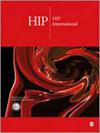Are current rates of uncemented fixation in total hip arthroplasty supported by the literature? An update on the uncemented paradox
IF 1.1
4区 医学
Q3 ORTHOPEDICS
引用次数: 0
Abstract
The optimal fixation method in total hip arthroplasty (THA) remains controversial. Initial concerns related to the long-term performance of cement fixation as well as cement disease led to the development of cementless implants, and registry data has indicated that the use of this type of fixation has increased in recent years. However, data from these same registries has not shown any improvement in outcomes when compared to cement fixation. On the contrary, while similar outcomes are seen when comparing these fixation types in younger patients (<70 years of age), cementless fixation has shown increased implant failure and revision rates in elderly patients (>70 years of age). Given the increased projected volume of THA in the United States over the next decade, it is important to utilise available data to make clinical decisions that minimise not only individual patient harm, but also the burden on the healthcare system itself. This review provides an overview of currently available outcomes data comparing cement and cementless fixation, as well as an updated analysis of current trends in fixation use in THA. We furthermore provide a comprehensive technique guide to help surgeons optimise cement fixation of the femoral component for THA and hemiarthroplasty.目前全髋关节置换术中的非骨水泥固定率是否有文献支持?非骨水泥悖论的最新进展
全髋关节置换术(THA)的最佳固定方法仍存在争议。最初人们对骨水泥固定的长期性能以及骨水泥疾病的担忧导致了无骨水泥植入物的开发,登记数据显示近年来这种固定方式的使用有所增加。然而,这些登记数据并未显示与骨水泥固定相比,无骨水泥固定的疗效有任何改善。相反,虽然在年轻患者(70 岁)中比较这些固定类型可获得相似的疗效,但在老年患者(70 岁)中,无骨水泥固定却显示出植入失败率和翻修率的增加。鉴于未来十年美国 THA 手术量的预计增长,利用现有数据做出临床决策不仅能最大限度地减少对患者个人的伤害,还能减轻医疗系统本身的负担,这一点非常重要。本综述概述了目前可用的骨水泥固定和无骨水泥固定的结果数据,并对 THA 中使用固定的当前趋势进行了最新分析。此外,我们还提供了一份全面的技术指南,帮助外科医生优化 THA 和半关节成形术中股骨组件的骨水泥固定。
本文章由计算机程序翻译,如有差异,请以英文原文为准。
求助全文
约1分钟内获得全文
求助全文
来源期刊

HIP International
医学-整形外科
CiteScore
4.20
自引率
0.00%
发文量
70
审稿时长
2 months
期刊介绍:
HIP International is the official journal of the European Hip Society. It is the only international, peer-reviewed, bi-monthly journal dedicated to diseases of the hip. HIP International considers contributions relating to hip surgery, traumatology of the hip, prosthetic surgery, biomechanics, and basic sciences relating to the hip. HIP International invites reviews from leading specialists with the aim of informing its readers of current evidence-based best practice.
The journal also publishes supplements containing proceedings of symposia, special meetings or articles of special educational merit.
HIP International is divided into six independent sections led by editors of the highest scientific merit. These sections are:
• Biomaterials
• Biomechanics
• Conservative Hip Surgery
• Paediatrics
• Primary and Revision Hip Arthroplasty
• Traumatology
 求助内容:
求助内容: 应助结果提醒方式:
应助结果提醒方式:


